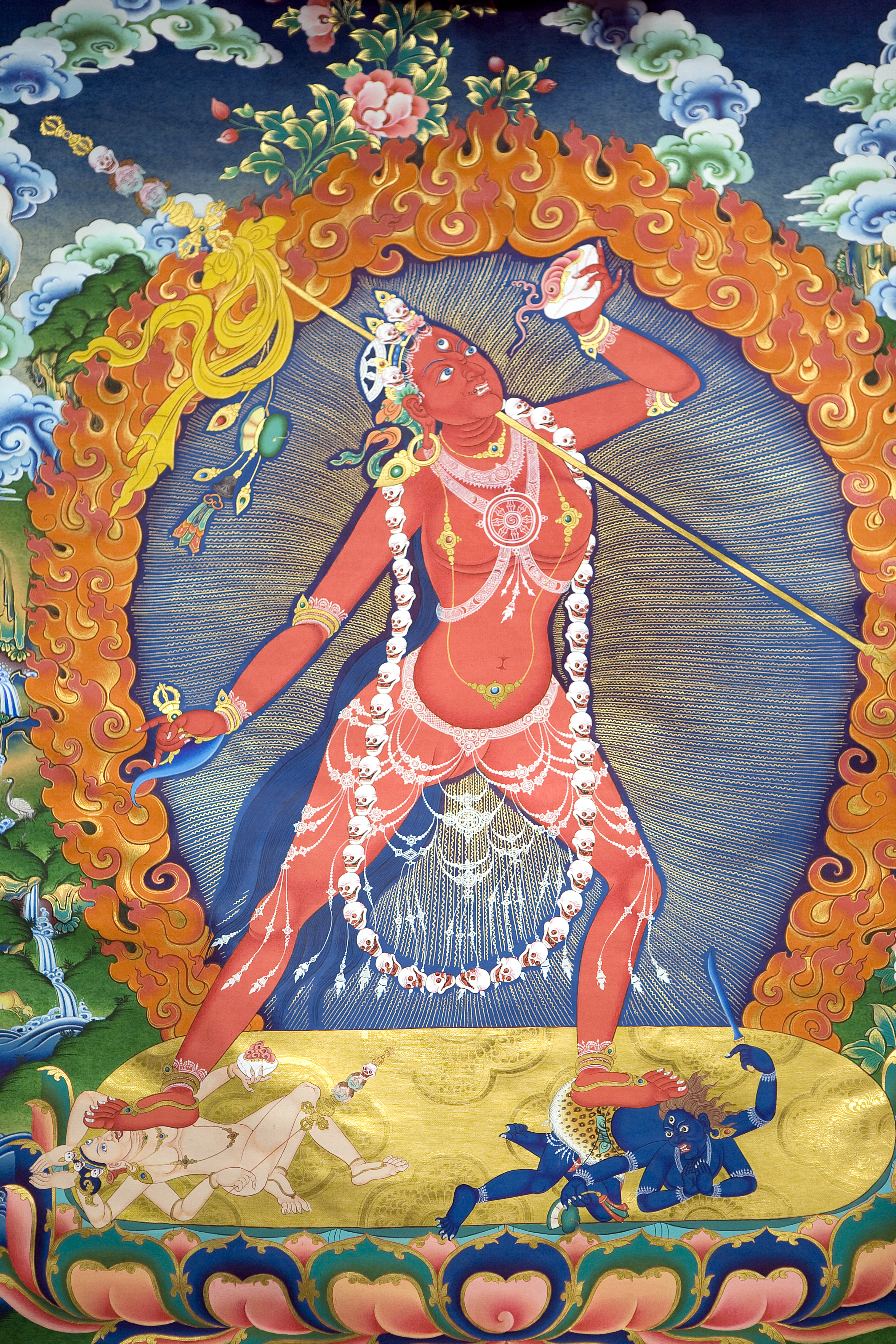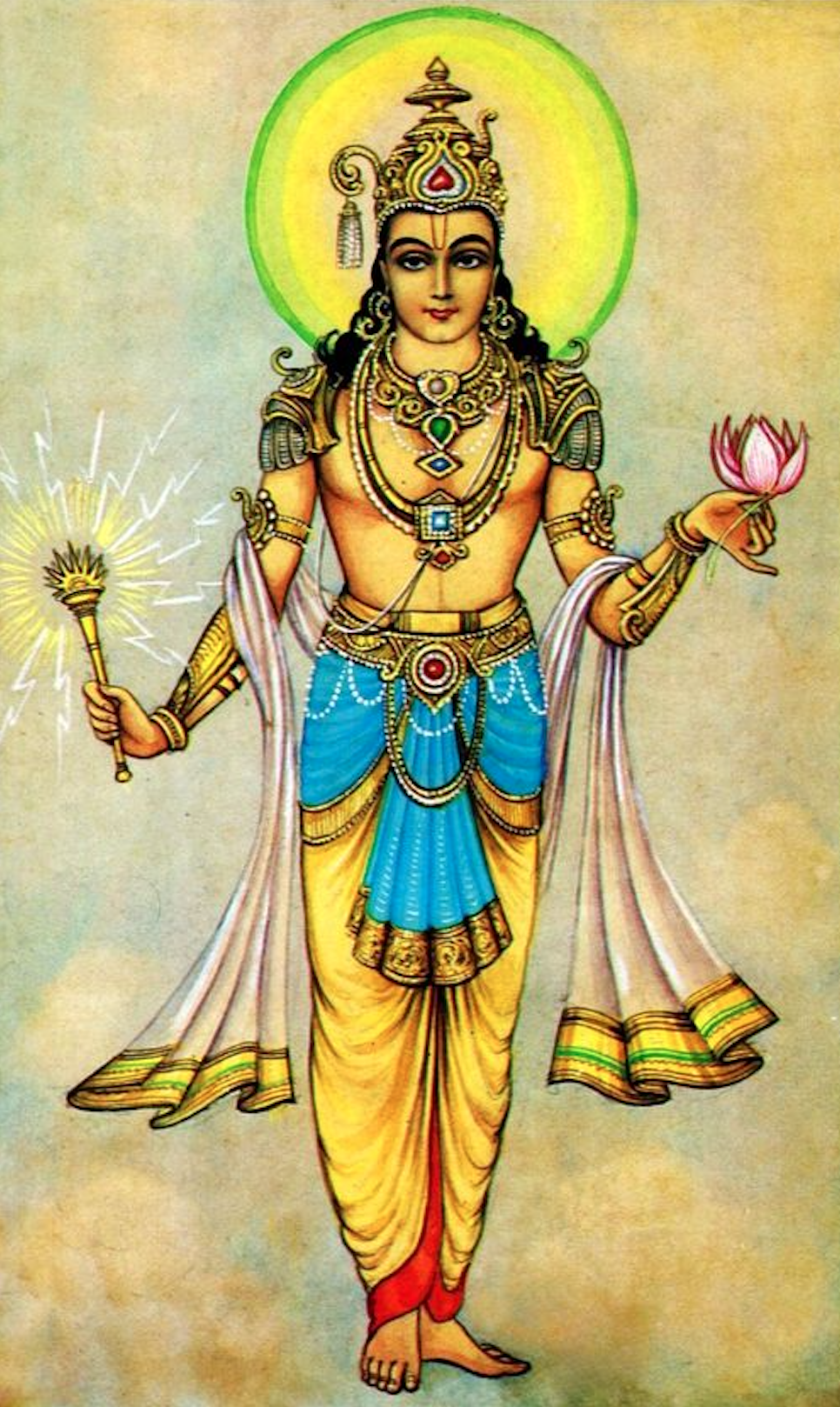|
Kartika (knife)
A kartika or drigug ( sa, kartari; , or ''kartrika'' in Nepal) is a small, crescent-shaped, hand-held ritual flaying knife used in the tantric ceremonies of Vajrayana Buddhism. The kartari is said to be "one of the quintessential attributes of the wrathful Tantric deities." It is commonly known as the "knife of the dakinis." Its shape is similar to the Inuit ulu or woman's knife, which is used for many things including cleaning skins. While the kartari is normally held in the right hand of a dakini in Vajrayana iconography and spiritual practice, occasionally it can be seen being held by esoteric male deities, such as certain forms of Yamantaka. It is also found frequently in the iconography of the Tibetan Buddhist spiritual practice of Chöd. Iconography In terms of iconography, The same way that the bell and vajra are usually paired ritual items in Vajrayana spiritual practice and iconography (one is held in the right hand and the other simultaneously held in the left), ... [...More Info...] [...Related Items...] OR: [Wikipedia] [Google] [Baidu] |
Vajrayogini
Vajrayoginī ( sa, italic=yes, Vajrayoginī वज्रयोगिनी; , Dorjé Neljorma; mn, Огторгуйд Одогч, Нархажид, ) is a Tantric Buddhist female Buddha and a . The ''Vajrayogini'' cult dates back to the tenth and twelfth centuries. Vajrayoginī's essence is "great passion" (''maharaga''), a transcendent passion that is free of selfishness and illusion—she intensely works for the well-being of others and for the destruction of ego clinging. She is seen as being ideally suited for people with strong passions, providing the way to transform those passions into enlightened virtues. She is an Anuttarayoga Tantra iṣṭadevatā (meditation deity) and her practice includes methods for preventing ordinary death, intermediate state (bardo) and rebirth ( samsara) by transforming them into paths to enlightenment, and for transforming all mundane daily experiences into higher spiritual paths. Practices associated with her are Chöd and the Six Yogas of ... [...More Info...] [...Related Items...] OR: [Wikipedia] [Google] [Baidu] |
Weapons In Buddhist Mythology
A weapon, arm or armament is any implement or device that can be used to deter, threaten, inflict physical damage, harm, or kill. Weapons are used to increase the efficacy and efficiency of activities such as hunting, crime, law enforcement, self-defense, warfare, or suicide. In broader context, weapons may be construed to include anything used to gain a tactical, strategic, material or mental advantage over an adversary or enemy target. While ordinary objects – sticks, rocks, bottles, chairs, vehicles – can be used as weapons, many objects are expressly designed for the purpose; these range from simple implements such as clubs, axes and swords, to complicated modern firearms, tanks, intercontinental ballistic missiles, biological weapons, and cyberweapons. Something that has been re-purposed, converted, or enhanced to become a weapon of war is termed weaponized, such as a weaponized virus or weaponized laser. History The use of weapons is a major driver of cultural ... [...More Info...] [...Related Items...] OR: [Wikipedia] [Google] [Baidu] |
Tibetan Buddhist Ritual Implements
Tibetan may mean: * of, from, or related to Tibet * Tibetan people, an ethnic group * Tibetan language: ** Classical Tibetan, the classical language used also as a contemporary written standard ** Standard Tibetan, the most widely used spoken dialect ** Tibetan pinyin, a method of writing Standard Tibetan in Latin script ** Tibetan script ** any other of the Tibetic languages Tibetan may additionally refer to: Culture * Old Tibetan, an era of Tibetan history * Tibetan art * Music of Tibet * Tibetan rug * Tibetan culture * Tibetan cuisine Religion * Tibetan Buddhism * Tibetan Muslims Other uses * Tibetan alphabet * Tibetan (Unicode block) * Tibetan name * Tibetan calendar * Tibetan Spaniel, a breed of dog * Tibetan Mastiff, a breed of dog See also * Tibetan Bells (other) * Traditional Tibetan medicine * Tibetan language (other) Tibetan language may refer to: * Classical Tibetan, the classical language used also as a contemporary written standard * Lhasa Tibe ... [...More Info...] [...Related Items...] OR: [Wikipedia] [Google] [Baidu] |
Guimet Museum
The Guimet Museum (full name in french: Musée national des arts asiatiques-Guimet; MNAAG; ) is an art museum located at 6, place d'Iéna in the 16th arrondissement of Paris, France. Literally translated into English, its full name is the National Museum of Asian Arts-Guimet, or Guimet National Museum of Asian Arts. The museum has one of the largest collections of Asian art outside of Asia. History Founded by Émile Étienne Guimet, an industrialist, the museum first opened at Lyon in 1879 but was later transferred to Paris, opening in the place d'Iéna in 1889. Devoted to travel, Guimet was in 1876 commissioned by the minister of public instruction to study the religions of the Far East, and the museum contains many of the fruits of this expedition, including a fine collection of Chinese and Japanese porcelain and objects relating not merely to the religions of the East, but also to those of ancient Egypt, Greece and Rome. One of its wings, the Panthéon Bouddhique, displa ... [...More Info...] [...Related Items...] OR: [Wikipedia] [Google] [Baidu] |
Thangka
A ''thangka'', variously spelled as ''thangka'', ''tangka'', ''thanka'', or ''tanka'' (; Tibetan: ཐང་ཀ་; Nepal Bhasa: पौभा), is a Tibetan Buddhist painting on cotton, silk appliqué, usually depicting a Buddhist deity, scene, or mandala. Thangkas are traditionally kept unframed and rolled up when not on display, mounted on a textile backing somewhat in the style of Chinese scroll paintings, with a further silk cover on the front. So treated, thangkas can last a long time, but because of their delicate nature, they have to be kept in dry places where moisture will not affect the quality of the silk. Most thangkas are relatively small, comparable in size to a Western half-length portrait, but some are extremely large, several metres in each dimension; these were designed to be displayed, typically for very brief periods on a monastery wall, as part of religious festivals. Most thangkas were intended for personal meditation or instruction of monastic students. The ... [...More Info...] [...Related Items...] OR: [Wikipedia] [Google] [Baidu] |
Vajra
The Vajra () is a legendary and ritual weapon, symbolising the properties of a diamond (indestructibility) and a thunderbolt (irresistible force). The vajra is a type of club with a ribbed spherical head. The ribs may meet in a ball-shaped top, or they may be separate and end in sharp points with which to stab. The vajra is the weapon of Indra, the Vedic king of the devas and heaven. It is used symbolically by the dharmic traditions of Hinduism, Buddhism, and Jainism, often to represent firmness of spirit and spiritual power. According to Hinduism, the vajra is considered one of the most powerful weapons in the universe. The use of the vajra as a symbolic and ritual tool spread from Hinduism to other religions in India and other parts of Asia. Etymology According to Asko Parpola, the Sanskrit () and Avestan both refer to a weapon of the Godhead, and are possibly from the Proto-Indo-European root ''*weg'-'' which means "to be(come) powerful". It is related to Proto- ... [...More Info...] [...Related Items...] OR: [Wikipedia] [Google] [Baidu] |
Kleshas (Buddhism)
Kleshas ( sa, क्लेश, kleśa; pi, किलेस ''kilesa''; bo, ཉོན་མོངས། ''nyon mongs''), in Buddhism, are mental states that cloud the mind and manifest in unwholesome actions. ''Kleshas'' include states of mind such as anxiety, fear, anger, jealousy, desire, depression, etc. Contemporary translators use a variety of English words to translate the term ''kleshas'', such as: afflictions, defilements, destructive emotions, disturbing emotions, negative emotions, mind poisons, neurosis etc. In the contemporary Mahayana and Theravada Buddhist traditions, the three kleshas of ignorance, attachment, and aversion are identified as the root or source of all other kleshas. These are referred to as the ''three poisons'' in the Mahayana tradition, or as the three ''unwholesome roots'' in the Theravada tradition. While the early Buddhist texts of the Pali canon do not specifically enumerate the three root kleshas, over time the ''three poisons'' (and the klesh ... [...More Info...] [...Related Items...] OR: [Wikipedia] [Google] [Baidu] |
Buddhist
Buddhism ( , ), also known as Buddha Dharma and Dharmavinaya (), is an Indian religion or philosophical tradition based on teachings attributed to the Buddha. It originated in northern India as a -movement in the 5th century BCE, and gradually spread throughout much of Asia via the Silk Road. It is the world's fourth-largest religion, with over 520 million followers (Buddhists) who comprise seven percent of the global population. The Buddha taught the Middle Way, a path of spiritual development that avoids both extreme asceticism and hedonism. It aims at liberation from clinging and craving to things which are impermanent (), incapable of satisfying ('), and without a lasting essence (), ending the cycle of death and rebirth (). A summary of this path is expressed in the Noble Eightfold Path, a training of the mind with observance of Buddhist ethics and meditation. Other widely observed practices include: monasticism; " taking refuge" in the Buddha, the , and th ... [...More Info...] [...Related Items...] OR: [Wikipedia] [Google] [Baidu] |
Enlightenment In Buddhism
The English term enlightenment is the Western translation of various Buddhist terms, most notably bodhi and vimutti. The abstract noun ''bodhi'' (; Sanskrit: बोधि; Pali: ''bodhi''), means the knowledge or wisdom, or awakened intellect, of a Buddha. The verbal root ''budh-'' means "to awaken," and its literal meaning is closer to awakening. Although the term ''buddhi'' is also used in other Indian philosophies and traditions, its most common usage is in the context of Buddhism. '' Vimukti'' is the freedom from or release of the fetters and hindrances. The term "enlightenment" was popularised in the Western world through the 19th-century translations of German-born philologist Max Müller. It has the Western connotation of general insight into transcendental truth or reality. The term is also being used to translate several other Buddhist terms and concepts, which are used to denote (initial) insight ('' prajna'' (Sanskrit), '' wu'' (Chinese), '' kensho'' and ''satori'' ... [...More Info...] [...Related Items...] OR: [Wikipedia] [Google] [Baidu] |
Upaya
Upaya (Sanskrit: उपाय, , ''expedient means'', ''pedagogy'') is a term used in Buddhism to refer to an aspect of guidance along the Buddhist paths to liberation where a conscious, voluntary action "is driven by an incomplete reasoning" about its direction. Upaya is often used with ''kaushalya'' (कौशल्य, "cleverness"), ''upaya-kaushalya'' meaning "skill in means". Upaya-kaushalya is a concept emphasizing that practitioners may use their own specific methods or techniques that fit the situation in order to gain enlightenment. The implication is that even if a technique, view, etc., is not ultimately "true" in the highest sense, it may still be an ''expedient'' practice to perform or view to hold; i.e., it may bring the practitioner closer to the true realization in a similar way. The exercise of skill to which it refers, the ability to adapt one's message to the audience, is of enormous importance in the Pali Canon. The Digital Dictionary of Buddhism notes tha ... [...More Info...] [...Related Items...] OR: [Wikipedia] [Google] [Baidu] |
Wisdom
Wisdom, sapience, or sagacity is the ability to contemplate and act using knowledge, experience, understanding, common sense and insight. Wisdom is associated with attributes such as unbiased judgment, compassion, experiential self-knowledge, self-transcendence and non-attachment, and virtues such as ethics and benevolence. Wisdom has been defined in many different ways, including several distinct approaches to assess the characteristics attributed to wisdom. Definitions The ''Oxford English Dictionary'' defines wisdom as "Capacity of judging rightly in matters relating to life and conduct; soundness of judgment in the choice of means and ends; sometimes, less strictly, sound sense, esp. in practical affairs: opp. to folly;" also "Knowledge (esp. of a high or abstruse kind); enlightenment, learning, erudition." Charles Haddon Spurgeon defined wisdom as "the right use of knowledge". Robert I. Sutton and Andrew Hargadon defined the "attitude of wisdom" as "acting with knowle ... [...More Info...] [...Related Items...] OR: [Wikipedia] [Google] [Baidu] |






